The new economic frontier
An ocean of opportunities

In a world where terrestrial resources are under increasing pressure and environmental challenges have become omnipresent, the oceans and marine resources are attracting growing interest as a potential driver of sustainable economic development. Against this backdrop, the concepts of a responsible and even regenerative blue economy are emerging to reorientate our relationship with the oceans and sustainably harness their potential.
The blue economy boom
The blue economy, a concept that emerged in the 90s and was initiated by Gunter Pauli, a Belgian economist and entrepreneur, is a rather broad term. The European Investment Bank (EIB) defines it as "all economic sectors with a direct or indirect link to the oceans, such as marine energy, sustainable maritime transport infrastructures, and marine biotechnology". Today, it is booming as a new economic frontier due to the surge in ocean exploitation in areas such as offshore energy, biotechnology, mining and aquaculture. Its influence extends far beyond coastal countries, underlining the significant importance of the direct and indirect dependence of the global socio-economic system on blue activities. According to OECD projections, by 2030, the blue economy could considerably increase its contribution to global added value, topping the $3,000 billion threshold. This international organisation even predicts that profits generated at sea will exceed those generated on land by this time. Furthermore, according to the EU Blue Economy Report 2023, the European Commission has estimated employment in the sector at 3.34 million, with revenues of €523 billion in the European Union.
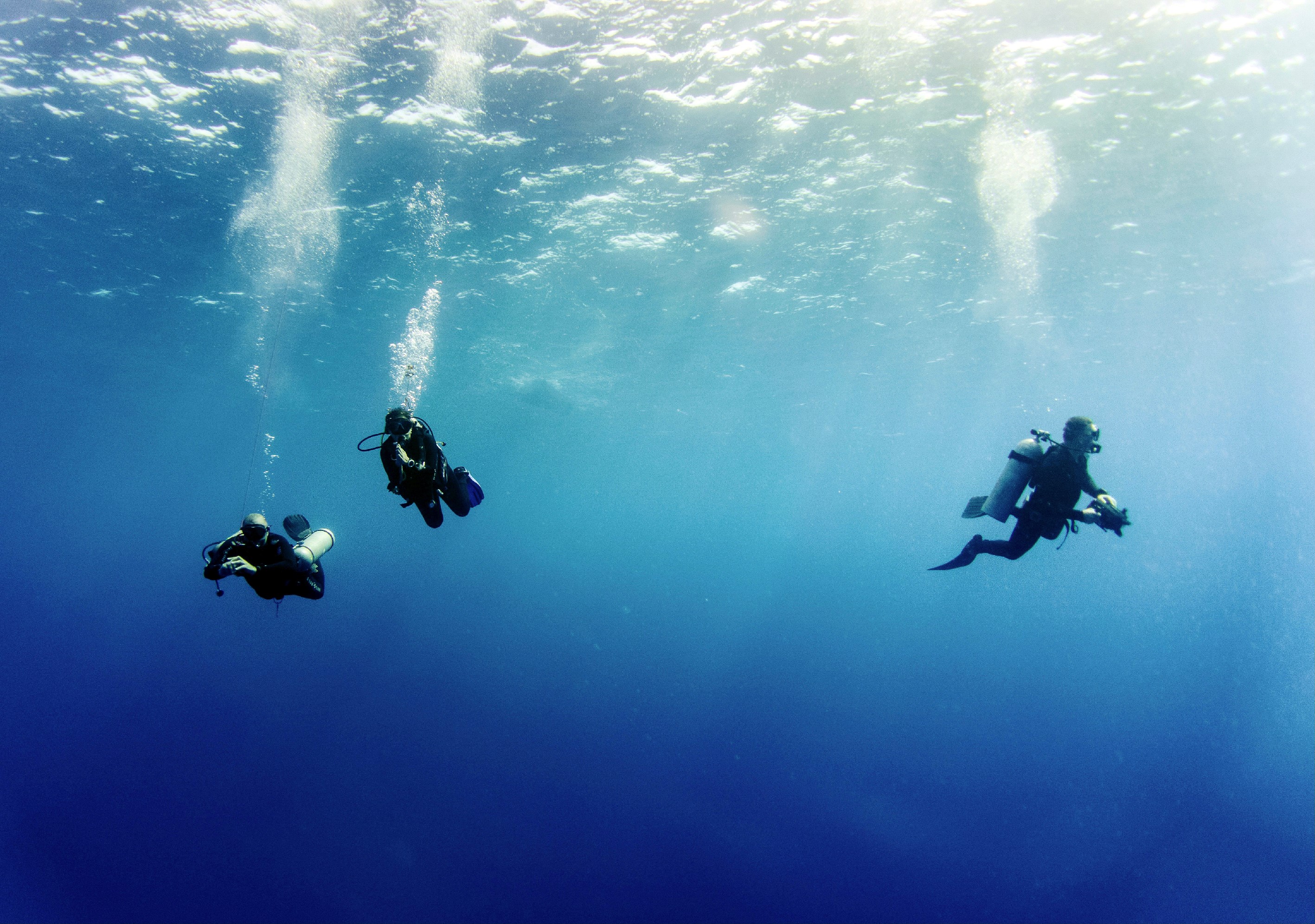
Photo : Gerald Schömbs
However, the benefits offered by the sea go far beyond the simple economic market value it generates and are referred to as "ecosystem services". These services are provided by marine and coastal ecosystems, estimated by the Oceans & Climate platform to be worth over 20,900 billion US dollars a year. Therefore, there is a need to preserve this value relying on an economic model based on something other than the simple extraction or pure exploitation of resources beyond their renewal rate. This is the idea of a sustainable, or even more so, regenerative blue economy. Indeed, the sustainable model emphasises the responsible and balanced use of these resources while respecting the environment and the communities that depend on them. It promotes sustainable fishing practices, the preservation of marine habitats and participatory governance, drawing on long-standing cooperation and commitments with various partners and stakeholders to ensure the long-term viability of ocean-related economic activities. Thus, it provides essential benefits to the present and future generations. It is firmly opposed to the concept of a red economy based on the excessive and inconsiderate exploitation of natural resources.
The regenerative blue economy, promoted at COP28, aims to revitalise marine ecosystems beyond mere sustainability to promote their regeneration and resilience.
BLUE ECONOMY & GREEN PACT
The European Commission's report on the EU's blue economy highlights its alignment with the European Green Pact for a sustainable, zero-carbon economy by 2050, highlighting five key areas for action:
- Climate neutrality and zero pollution: The EU is promoting the development of renewable energies at sea and greener practices in maritime transport and ports.
- Circular economy and waste prevention: The EU aims to fight various forms of marine pollution, particularly by plastics, and is exploring guidelines for better fishing gear design and ship recycling.
- Biodiversity and investment in nature: Targets for 2030 include extending protection to 30% of the EU's maritime area and creating ecological corridors.
- Coastal resilience: Adaptation initiatives favour natural solutions to strengthen coastal resilience, complementing traditional infrastructures.
- Responsible food systems: The EU is encouraging responsible fishing and aquaculture to ensure sustainable stocks, as well as seaweed farming being an alternative to conventional agriculture.
50 SHADES OF BLUE
The blue economy is an area of growing global interest, offering a range of challenges and opportunities in different sectors. From energy production to transport, tourism to food, and medicine to biotechnology, these activities encompass a wide range of fields that take advantage of marine and coastal resources for sustainable economic development. Here's a look at some of the sectors undergoing change.
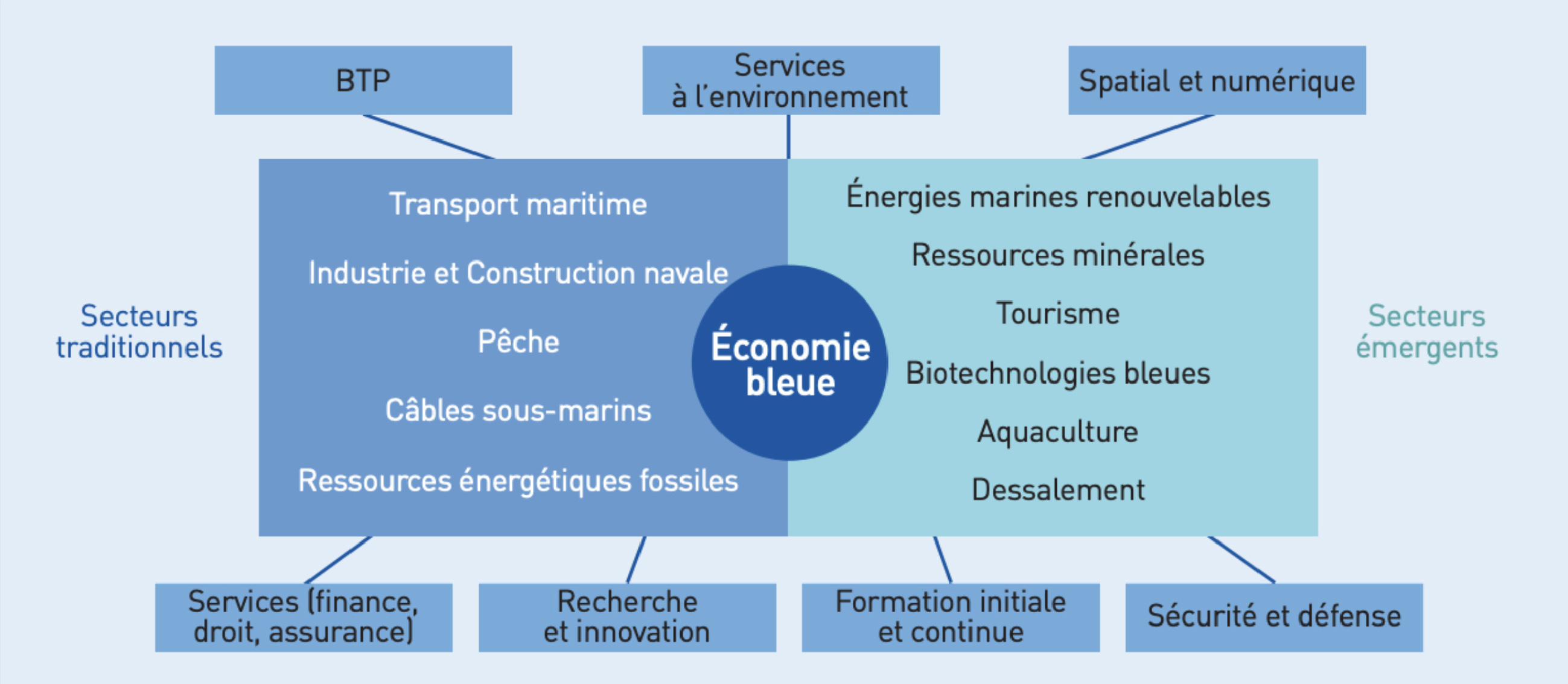
Blue economy activities
Blue transport
Maritime transport, an integral part of the blue transport sector, plays an essential role in facilitating international trade and connectivity between world regions. In addition, inland transport, also part of the blue economy, encompasses the movement of passengers and goods across rivers, canals, lakes and other inland waterways, including ports.
As the world's largest trading bloc, the EU relies heavily on maritime transport for its trade. Indeed, according to 2021 data from the EU Blue Economy report 2023, 74% of the EU's total imports and exports of goods were carried by sea. At the global level, maritime transport is responsible for almost 80% of the total value and 90% of the total trade volume. Therefore, this sector significantly influences our planet's carbon footprint and environmental impact. Indeed, as the International Maritime Organization (IMO) has pointed out, shipping remains a significant source of environmental pressure, with projected greenhouse gas emissions expected to reach between 90% and 130% of 2008 levels by 2050. Although the IMO is committed to halving these emissions by 2050 compared to 2008 levels, the sector is struggling to implement this transition within the set timeframe. It is, therefore, crucial to consider more sustainable alternatives to meet these challenges, such as the booming sailing industry. Between 37,000 and 40,000 wind-powered ships could be operating by 2050.
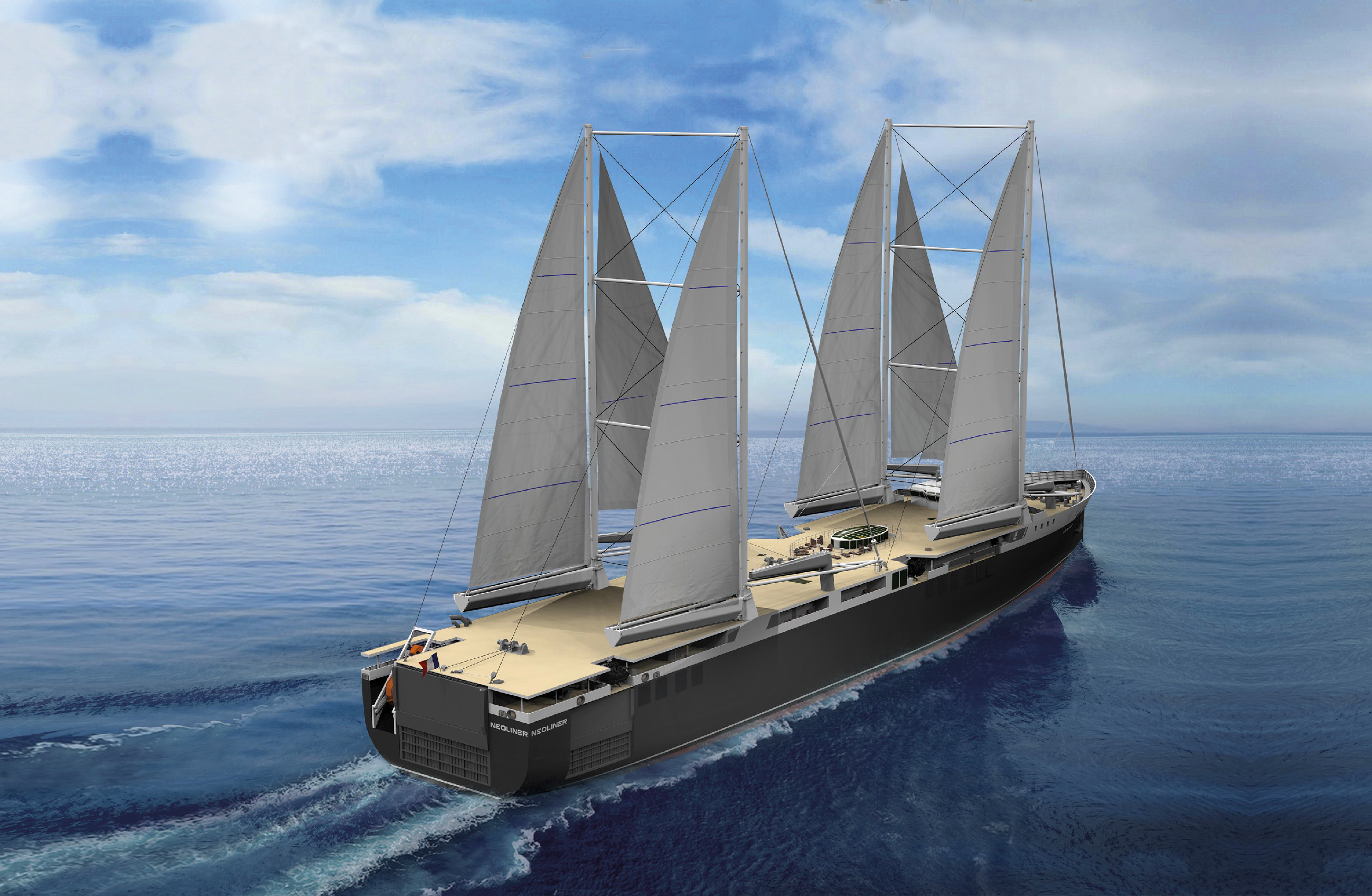
First generation Neoline pilot ship measuring 136m in lenght.
Blue energy
The transition to sustainable energy currently requires a rapid expansion of renewable electricity production and the conversion of sectors still linked to hydrocarbons. In this context, marine renewable energies are a promising source for exploring tides, swell, currents, and wind power. According to Global Wind Energy Council specialists, expanding offshore renewable energies could help to achieve almost 10% of the annual reductions in greenhouse gas emissions required to limit global warming to 1.5°C by 2050. The European Union has a distinct advantage in developing and promoting offshore renewables, as it is currently the world's leading producer of wind, wave and tidal energy and has the largest maritime area in the world.
There are two main types of blue energy: offshore wind power and ocean energy. In 2022, offshore wind installations represented a total cumulative capacity of 16 GW in the EU. On a global scale, according to forecasts by the International Energy Agency, offshore wind capacity will increase fifteenfold by 2040. Ocean energy, more specifically wave and tidal power and ocean thermal energy conversion, still needs to be developed more. In fact, at the beginning of 2023, Europe had an operational ocean energy capacity of just 13 MW out of 43 MW total cumulative capacity made up of demonstrators installed since 2010.
However, the oil and gas era is not over. The discovery of new deep-water deposits and the technological advances that make them exploitable have propelled offshore hydrocarbon production to a third of the world's total production. At a time when it is becoming increasingly urgent to move away from fossil fuels to counter climate change, new opportunities for exploiting deposits are emerging, particularly in the Arctic. It is in this context that sustainable blue energy is gaining ground as an essential element in the much-needed energy transition.
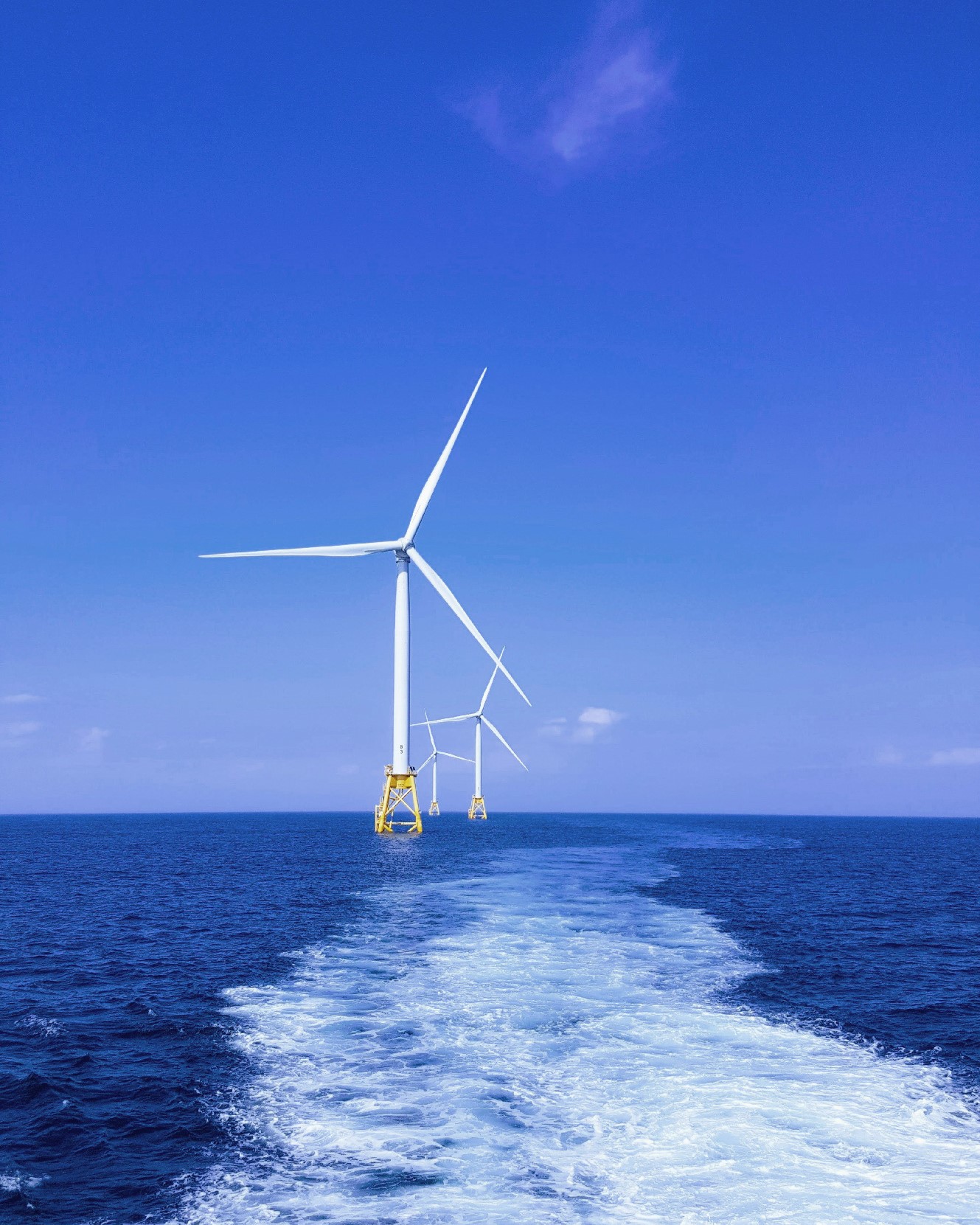
Photo : Shaun Dakin
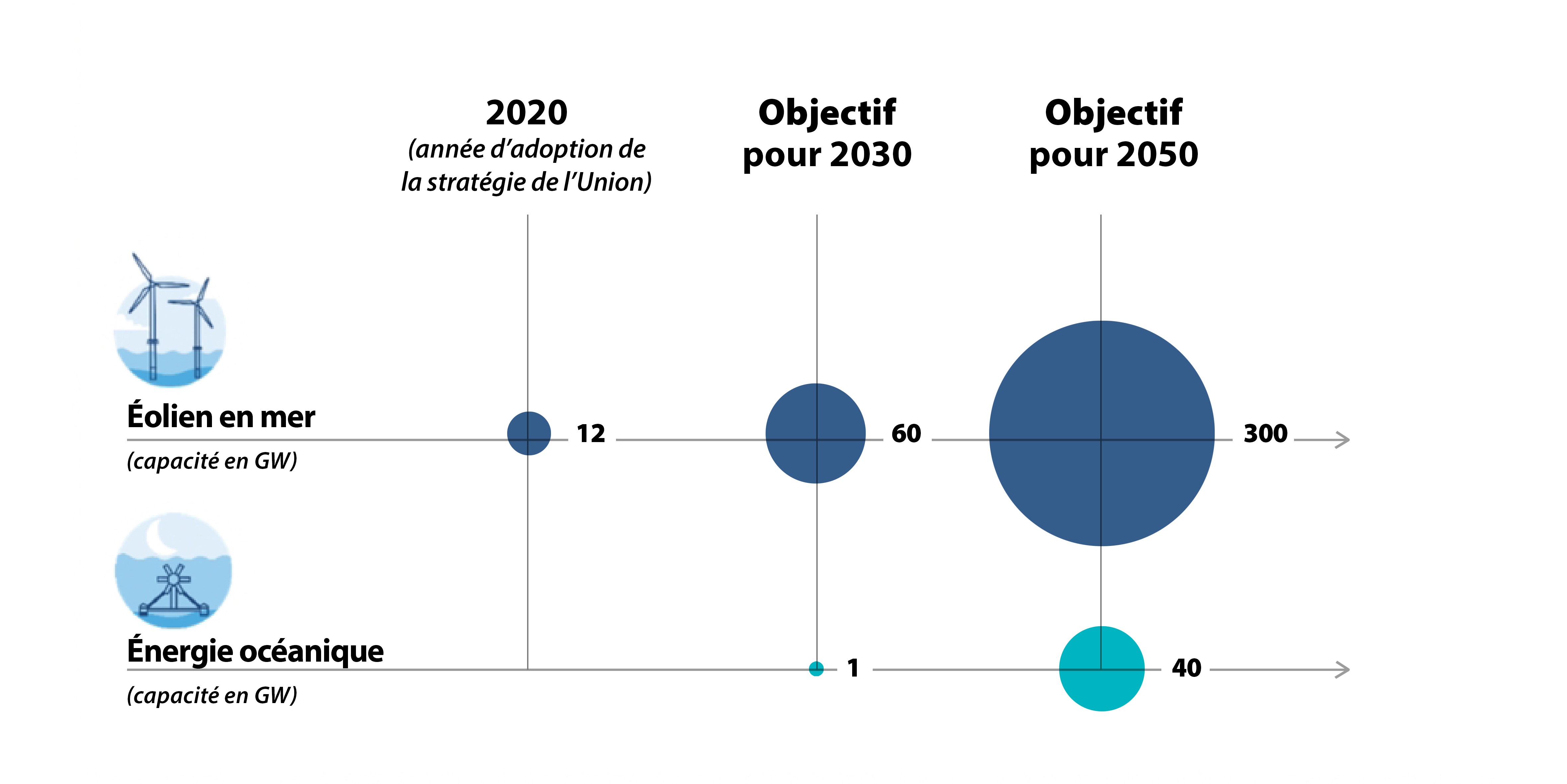
Marine renewable energy targets integrated into EU strategy.
Blue tourism
A report published by the Blue Tourism Initiative in 2023 describes coastal and marine tourism (CMT), also known as blue tourism, as one of the most critical sectors of the blue economy and the tourism industry. It is also the fastest growing economic sector at sea. Coastal tourism encompasses a variety of leisure activities on beaches, such as swimming, sunbathing, surfing and recreational fishing, as well as land-based activities in the coastal zone, such as walking along the coast or observing marine life. Blue tourism accounts for at least 50% of the global tourism sector and supports millions of jobs and livelihoods worldwide.
However, coastal tourism has a significant direct environmental impact. According to WWF, 52% of the waste found in the Mediterranean Sea is attributable to tourism. Added to this are emissions from travel and the artificialisation caused by the development of tourist infrastructures and urbanised areas. Another aspect that is often overlooked is the impact of sunscreen on marine ecosystems. Although widely used to protect the skin from the harmful effects of the sun, traditional sunscreen - alternatives now exist to it - can have detrimental effects on coral reefs and marine life because of its chemical components, of which, on average, around 25% are dispersed in the ocean.
To limit these various impacts, the concept of ecotourism is growing in popularity. It is defined as responsible tourism that supports the conservation of natural environments. Even cruise ships, often criticised for their ecological impact, offer opportunities for a transition to more sustainable practices. A relevant example is the Norwegian company Hurtigruten's zero-emission cruise ship project, called "Sea Zero", which can accommodate 500 passengers while sailing the North Sea thanks to its innovative electric technologies.
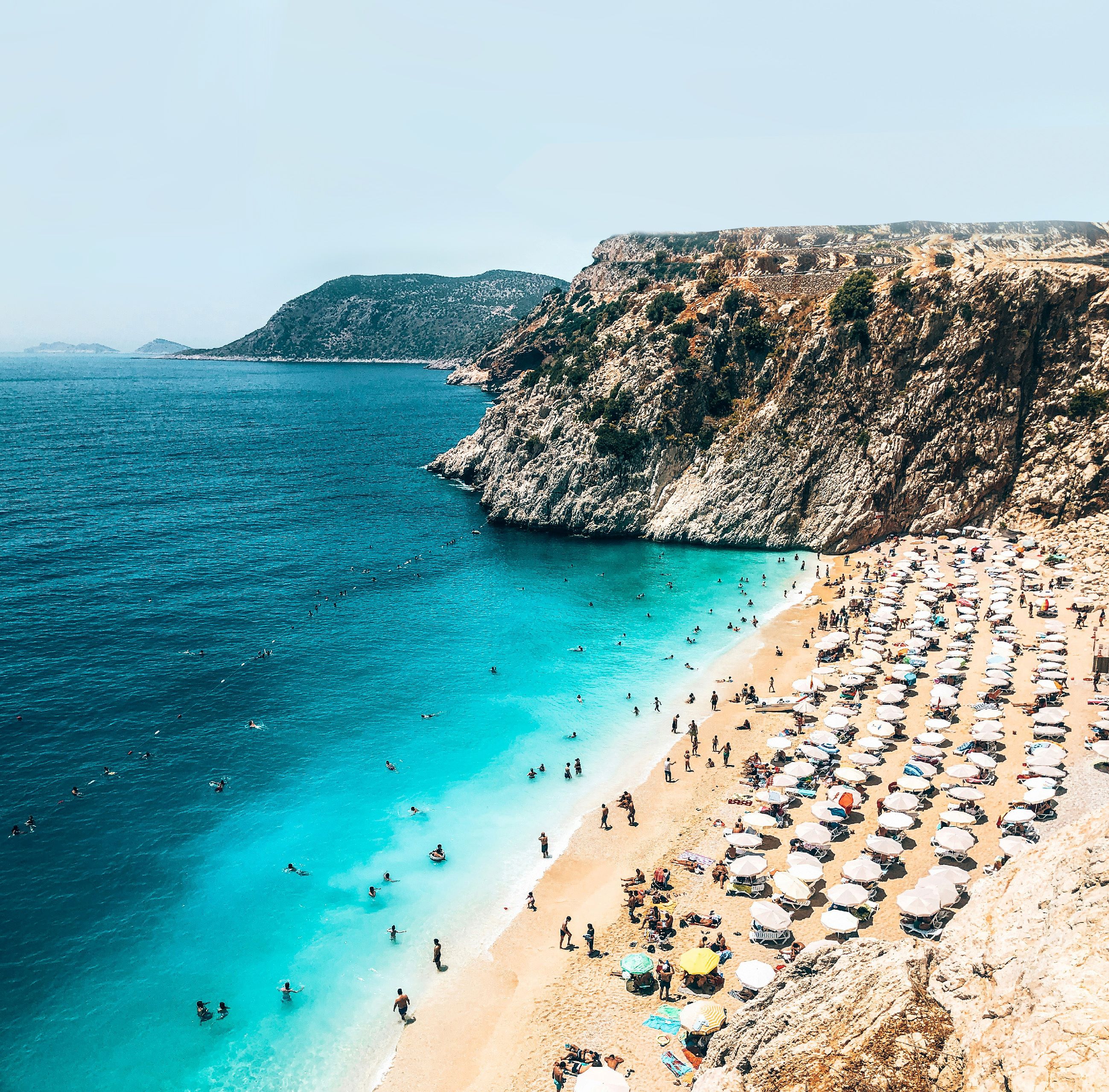
Photo : Atif Zafrak
Blue food
Blue food is an emerging concept that refers to producing and consuming food from marine resources. It encompasses diverse food products such as fish, seafood, algae and other aquatic organisms. The blue food portfolio is highly diversified. More than 2,500 species of marine and freshwater animals and plants are present in the human diet. These foods are vital for around three billion people, accounting for almost 20% of their animal protein intake. In contrast, fishing is the primary source of income for 10 to 12% of the world's population, underlining the economic and social importance of marine resources. The European Union ranks sixth worldwide in terms of production of fishery and aquacultural products.
More than 157 million tonnes of aquatic animals, representing 89% of the total volume, were destined for human consumption in 2020, according to the 2022 edition of "The State of World Fisheries and Aquaculture” report. However, available fisheries resources are threatened by fleet expansion, destructive fishing methods and illegal, unreported and unregulated fishing. Governments' effective control of fishing methods and the promotion of regenerative practices are vital to securing the stocks of our future blue food.
The growth prospects for aquaculture are also promising, as it offers a solution to the challenge posed by the sustainable management of fish stocks facing the growing demand for proteins. According to the Food and Agriculture Organisation (FAO) of the United Nations, aquaculture can achieve the three objectives of smart agriculture: increasing productivity, adapting to climate change and reducing greenhouse gas emissions. However, with aquaculture growing at a colossal rate worldwide, significant concerns about its environmental impact exist.
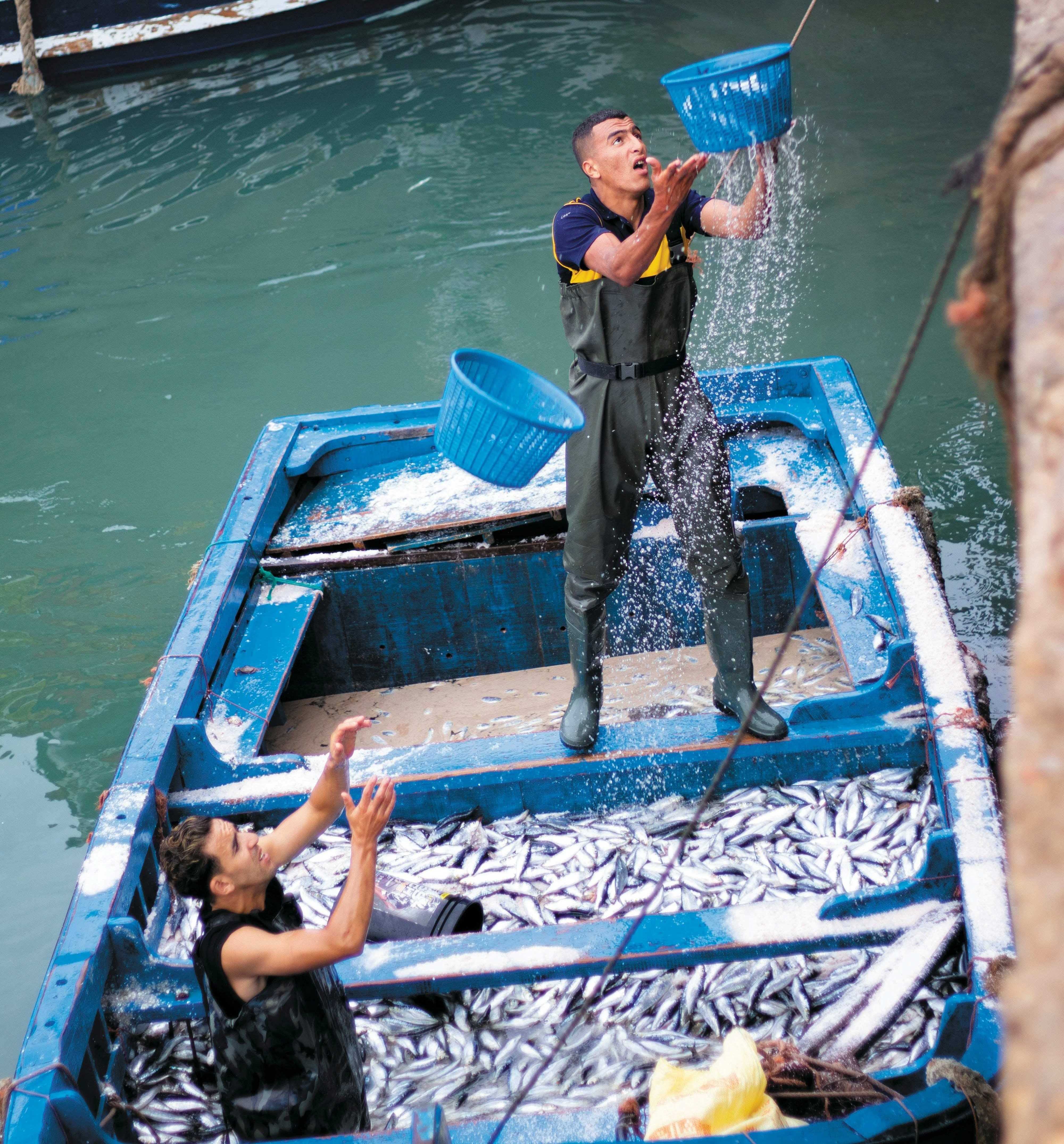
Photo : Thiebaud Faix
Biotechnology and blue medicine
The blue biotechnology sector is up-and-coming. It represents a significant advance in scientific research, focusing on exploring marine resources and organisms to develop new technologies and applications. Also referred to as marine biotechnology, these techniques encompass processes aimed at transforming marine resources into various services and products in multiple sectors, including pharmaceuticals, cosmetics, aquaculture, agri-food, energy and environmental restoration. This transformation is based on using micro-organisms such as microalgae, bacteria and fungi, as well as marine organisms such as algae and invertebrates.
According to the European Commission, seaweed farming represents a significant European industry, with seaweed and spirulina being produced commercially in 23 Member States. Annual sales have exceeded €10 million in the EU countries with the most critical production facilities, notably located in Portugal. According to the FAO, EU aquaculture produced more than 260 tonnes of macroalgae in Spain, Ireland and Portugal in 2019.
Blue biotechnology also has implications in areas such as pharmacology and medicine. The oceans are home to the world's largest stock of biological resources, offering a biodiversity unmatched by any other terrestrial ecosystem. Around 500,000 species of animals and plants belong to 28 different phyla (categories). Among them, nine types of marine animals and plants have been studied to detect natural products with medicinal properties. In addition, many marine bioactive molecules have entered the global drug market and have been the subject of clinical trials, such as alkaloids, anthraquinones, peptides, polysaccharides, polyketides
and terpenes. Marine natural products have apparent curative effects on treating various human diseases, which can resist viruses, tumours and inflammation. Currently, 17 medicines derived from marine sources are available in the pharmaceutical markets of the European Union, the United States, and other countries such as Australia and China. The molecules present in the seas are still largely unknown, but they represent a promising field for advances in pharmacology.
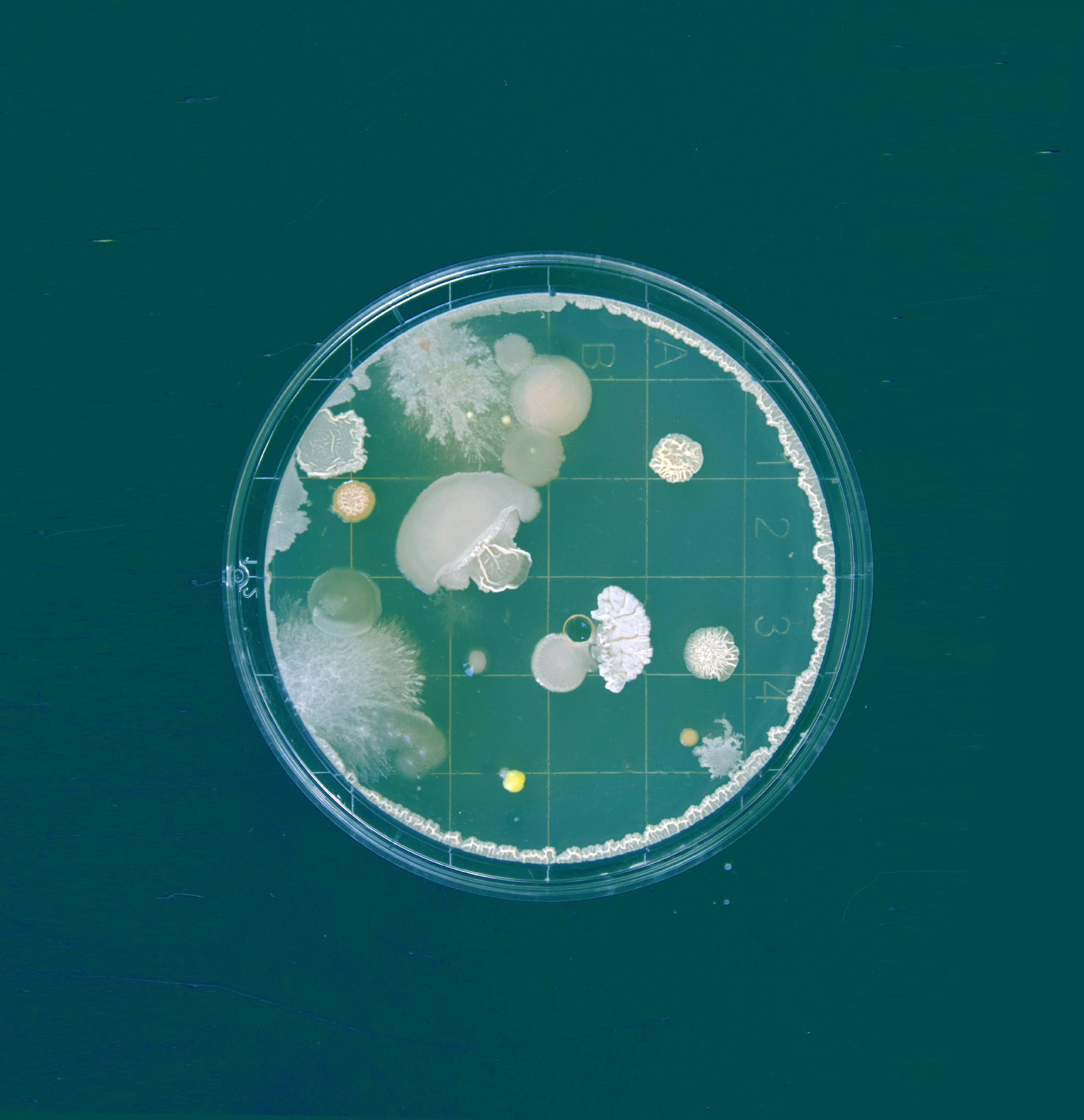
Photo : Mickael Schiffer
Blue finance
Finance plays a crucial role in supporting and developing a more sustainable blue economy. Financial flows dedicated to these activities follow a clear trajectory, channelling resources towards essential marine projects. These flows, deliberately directed towards sectors such as blue energy, sustainable maritime transport infrastructure and marine research, are fuelling the sustainable growth of the blue economy. Blue bonds, in particular, are emerging as innovative instruments dedicated to financing projects linked to the oceans’ preservation. These bonds, specifically designed to support sustainable initiatives, reached a total value of $5 billion between 2018 and 2022.
In addition, various partnerships have emerged to support this new economy. The Partnership for a Sustainable Blue Economy aims to coordinate investment in research and innovation, encompassing marine basins and the Atlantic Ocean, with investment planned over seven years to reach €450 million by 2030. In parallel, the Blue Partnership for the Mediterranean represents a collaborative alliance seeking to coordinate actions and mobilise resources to promote a sustainable economy based on marine activities along the southern coast of the Mediterranean, with the ambitious aim of mobilising at least €1 billion in investment.
Some countries, such as Luxembourg, also intend to play an essential role in developing this blue finance. Indeed, the Grand Duchy has contributed €40 million to the EU's new Renewable Energy Financing Mechanism (REFM) as a "contributor" country. Luxembourg is also financing maritime renewable energies in Denmark and is expected to contribute between €33 and 66 million.
A key player in blue finance in Europe is European Investment Bank (EIB). Faced with the environmental challenges threatening the oceans and as a significant promoter of the fight against climate change, the institution has strengthened its commitment to sectors linked to the maritime economy (see our interview with Franck Jesus). By investing in initiatives promoting a sustainable blue economy, the EIB supports lowcarbon solutions, coastal resilience to the climate change impacts, and the preservation and restoration of marine ecosystems. Between 2019 and 2023, EIB financing in this area reached €7.3 billion, mobilising €30.8 billion
in investments.
Through these various mechanisms, the blue finance stands as a catalyst for change, propelling the blue economy towards sustainable horizons. Nevertheless, it is important to note that despite this progress, the Goal 14 (conservation and sustainable use the oceans, seas and marine resources) is the least funded of the 17 Sustainable Development Goals (SDGs) defined by the United Nations Agenda 2030 established since 2015. Therefore, the cause of the oceans still needs to be taken up by the financial community.
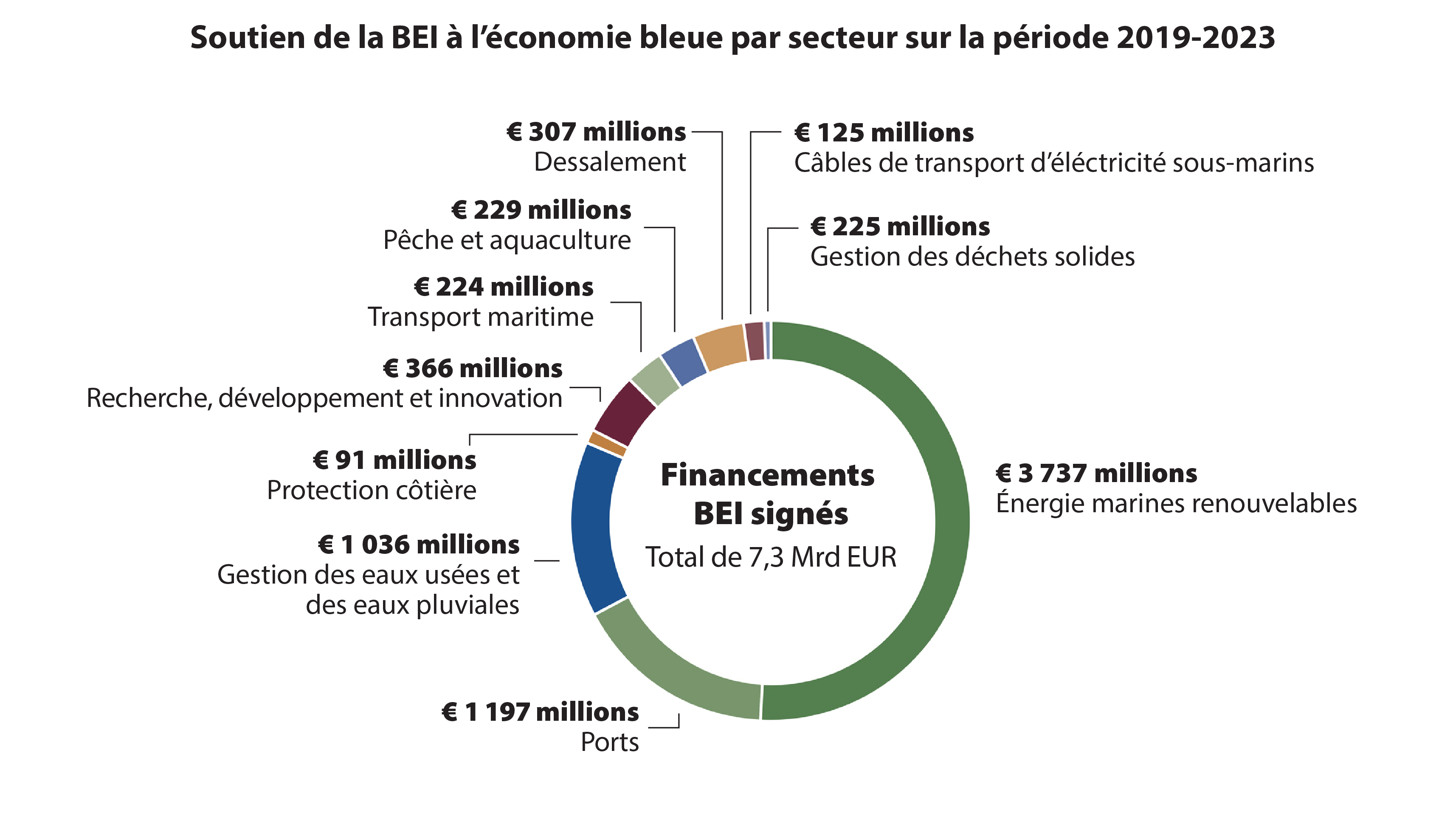
Source : EIB
The precautionary principle and governance
After greenwashing, bluewashing is also making its mark. Bluewashing occurs when companies or governments use communication strategies to give a false impression of environmental sustainability in the maritime context. A blue economy is not necessarily sustainable, far from there. When approaching the concept of a sustainable blue economy, it is essential to examine how the precautionary and governance principles are integrated. The precautionary principle encourages early action to prevent potential environmental damage, while effective governance ensures the responsible and balanced management of marine resources for sustainable development.
The precautionary principle can be applied to various issues, including geo-engineering, conventional desalination techniques and deep-sea mining. Moreover, the European Parliament has asked the European Commission to apply the precautionary principle to seabed mining and to favour the reuse and recycling of minerals as alternatives to such exploitation.
Raising awareness among the general public and decision-makers that all humankind depends on marine ecosystem services for its survival will make it possible to put appropriate oceans’ governance in place, bringing together all stakeholders. The two key objectives of such an approach are to support local communities' coastal zone management systems and ensure the protection and effective management of species and their habitats in international areas using various conservation tools. In addition, the targets of SDG 14 provide an opportunity to bring ocean governance to the forefront of the global debate on sustainable development so that the blue economy becomes resolutely sustainable.
To be read also in the dossier "For a sustainable blue economy":


